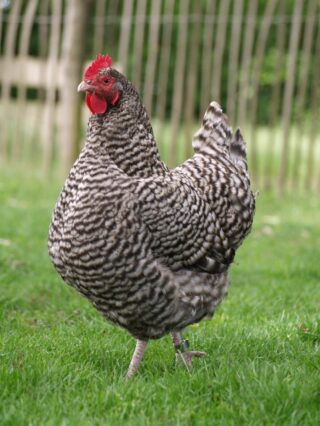So, you’ve decided you want to keep poultry in your back garden. That’s great! But, how do you know what breed is right for your back garden flock?
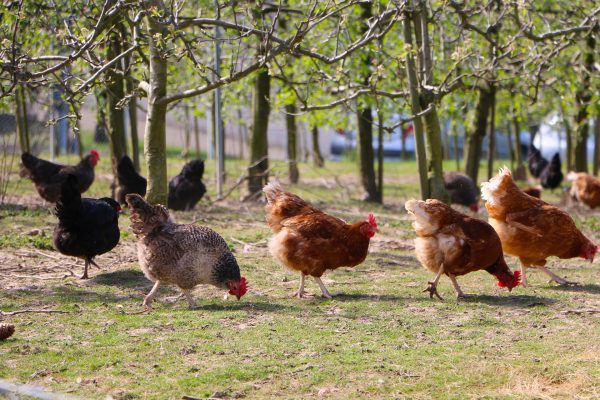
There are so many different breeds of poultry, and they all have their own characteristics and uses. Some have docile temperaments and are easy for beginners, while others take a more experienced keeper. Some are prolific egg layers, while others produce flavoursome meat. If you want to raise your own chicks, there are breeds that are naturally more broody and make good mothers, while other breeds are too busy and active to care for chicks.
If you want to raise chickens in your garden, here are some of the best chicken breeds for a back garden flock.
Barnvelder
T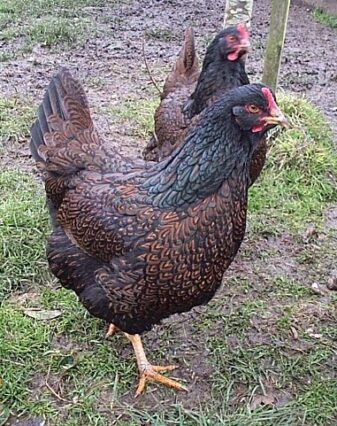 he Barnevelder chicken breed originated from the Dutch town of Barneveld, just before the start of the First World War. It is a dual purpose breed, produced from a mixture of traditional Dutch breeds and Orpingtons, with the idea to have a breed able to produce eggs all year through.
he Barnevelder chicken breed originated from the Dutch town of Barneveld, just before the start of the First World War. It is a dual purpose breed, produced from a mixture of traditional Dutch breeds and Orpingtons, with the idea to have a breed able to produce eggs all year through.
Appearance: Barnvelders are sturdy looking birds with a wide breast and short wings. They have yellow skin, a single comb and red earlobes. Their eyes are orange and the legs and beak are yellow.
There are a variety of colours available, however most are rarely seen in the UK. The most common is gold double laced, but there is also red, black, silver and blue double laced and partridge.
Character: Friendly, active birds that are a good breed for beginner poultry keepers. They are docile, easy to handle and nice towards other members of the flock. They are good back garden birds.
Care: A hardy breed, able to withstand cold European winters, although adequate shelter must be provided.
These birds can tolerate being kept in smaller enclosures, but require regular exercise due to a tendency to become overweight. Not a flighty breed, so medium height fencing enough to contain them.
Barnvelders are excellent foragers and will feed themselves well if they have the freedom to do so. This gives a good egg to feed ratio, and are cheap to keep when in a free range set up.
Laying ability: Barnvelders are sought after for the colour of their eggs! Hens lay around180 large, dark chocolate brown eggs per year on average, and also into the colder months. Some hens will be broody, and others not so, but the broody ones are reliable at sitting on eggs. and they are good mothers.
Weight: Slow to mature. Cocks up to 3.9 kg, Hens up to 2.9 kg. Bantam version: Yes.
Frizzle
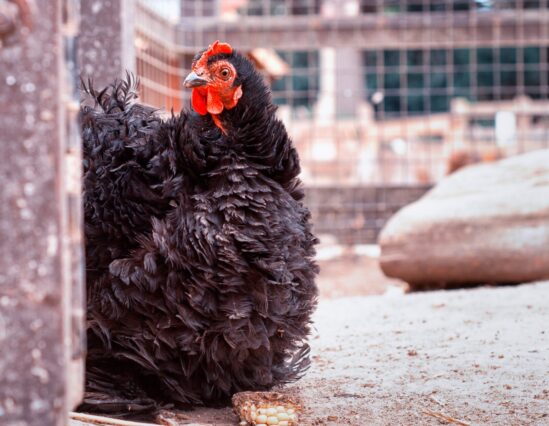
The Frizzle chicken is an old breed that is thought to originate from Southern Asia, Java and the Philippines. Because of their feathering, Frizzles are usually kept for exhibition, yet they do produce a fair amount of eggs and meat.
Appearance: They have a distinctive appearance with feathers that curl, making them look fluffy. There are three different types of feathering, frizzled, over frizzled and flat coated, and there are many colour varieties such as blue, white, black and buff. They have a single red comb.
Character: They enjoy human company, are active yet docile in temperament and are easy to handle.
Care: Frizzle chickens are hardy and happy to forage outdoors in a free range set up, yet they can adapt to smaller enclosures.
Laying ability: The hens lay around 160 eggs per year, and they can be broody.
Weight: Cocks up to 3.6 kg, hen up to 2.7 kg. Bantam version: Yes.
Plymouth Rock
The Plymouth Rock chicken was bred in the USA, and gets its name from the town of Plymouth. It is an old and successful breed that is dual purpose.
Appearance: There many colour varieties, such as barred, buff, partridge, white, silver pencilled, blue and Columbian. They have red earlobes and a single comb.
Character: They are docile, easy to handle and can be quite tame, making them a good choice for beginner poultry keepers.
Care: Plymouth Rocks are hardy and can tolerate colder climates. They do enjoy free range set ups but can adapt to smaller enclosures as long as they get the opportunity to exercise.
Laying ability: The hens are good layers and can produce around 200 eggs per year. They can have a tendency to be broody, sit well on their eggs and make good mothers.
Weight: Cocks up to 4 kg, hens up to 3.4 kg. Bantam version: Yes.
Sussex
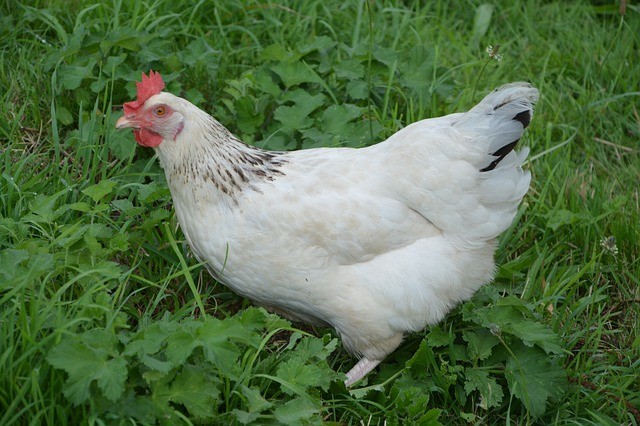
Sussex is an old but successful breed that is still around in great numbers. They originate from Sussex, UK. It is one of the most productive dual purpose breeds, and has long been prized for providing a good amount of meat.
Appearance: The colour varieties are brown buff, speckled, silver, white and light red. They have a single comb and red earlobes.
Character: Sussex chickens are a hardy, active breed that are docile in temperament, making them a great choice for beginner poultry keepers.
Care: They are great at foraging and enjoy free range set ups, but they can adapt to smaller enclosures as long as there is the opportunity to exercise.
Laying Ability: The hens lay around 250 large creamy brown coloured eggs per year, even through the winter months. They are not often broody but make good mothers.
Weight: Cocks around 4 kg, hens up to 3 kg. Bantam version: Yes.
Wyandotte
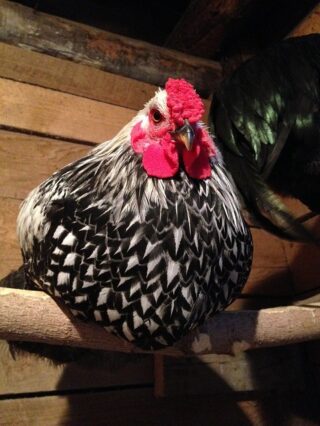
Wyandotte chickens are kept for both meat and eggs, and originate from the USA.
Appearance: Large and rounded, and there are many colour varieties such as blue, white, black, red, buff, partridge, silver pencilled, barred, blue and buff laced, silver, gold and Columbian. The variety of colours makes them a breed that is often exhibited at poultry shows. They have red earlobes and rose combs.
Character: Wyandottes are docile in temperament and easy to handle.
Care:Good foragers that are happy to be in a free range set up, although they can adapt to smaller enclosures. They are hardy and able to tolerate colder temperatures.
Laying Ability: The hens are good layers and produce around 200 eggs per year. They are also reliable brooders, will often sit on other eggs and they are good mothers.
Weight: Cocks up to 3.8kg, hen up to 2.7 kg. Bantam version: yes.

If you want to know more about keeping chickens, see my book Smallholding: A Beginner’s Guide to Raising Livestock and Growing Garden Produce.
Want to learn more about raising chickens, and other smallholding topics? Add your email for interesting tips and tricks, straight to your inbox.

